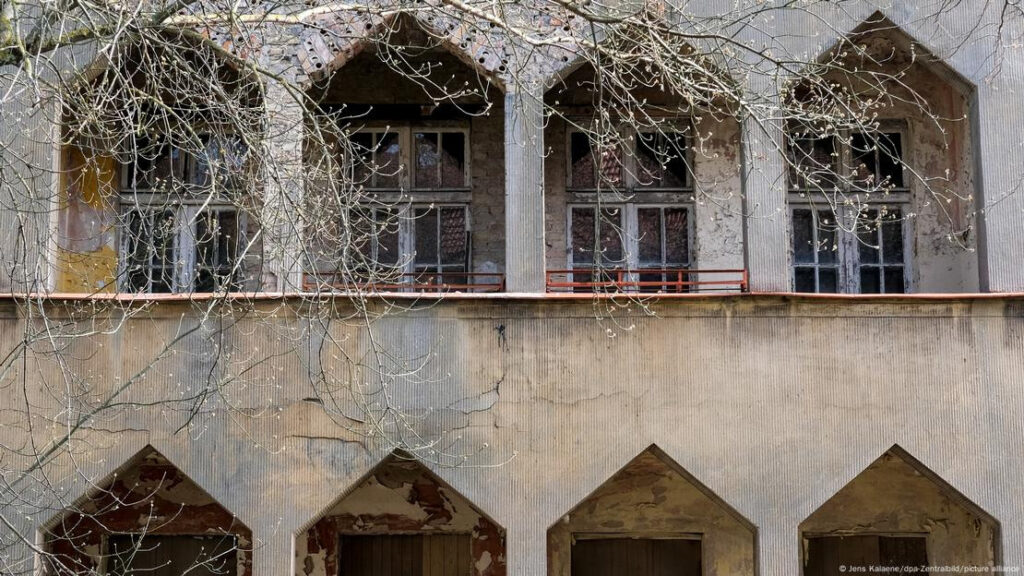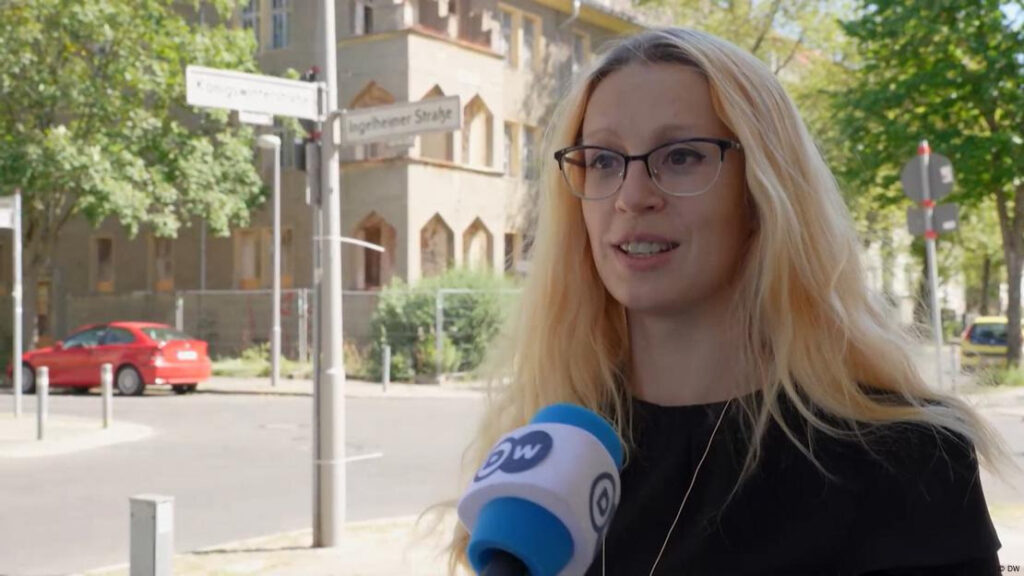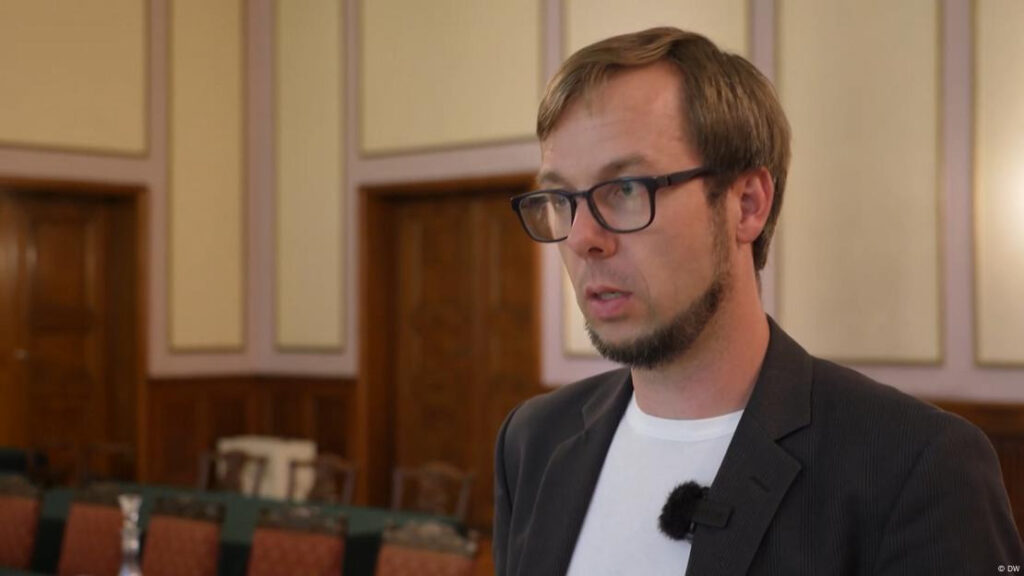Since the post-Cold War exit of Soviet troops from Germany, Russia has maintained ownership of derelict buildings in Berlin’s Karlshorst district. A local politician aims to confiscate them for Ukraine’s benefit.
Almost everyone in Berlin’s southeast Karlshorst district knows them — two corners blighted by abandoned three-story buildings with rotten window frames. Locals call them the “Russian houses.”
For almost 50 years, they were home to families of Soviet and, later, Russian officers. But in the summer of 1994, when Russia withdrew its last troops from Germany after the Cold War ended, the buildings were left empty. Thirty years later, they are still owned by Russia.
Locals say that an elderly Russian-speaking couple sometimes sweeps leaves and garbage from the fenced-off grounds at the corners of Andernacher Strasse and Königswinterstrasse, and at Ehrenfelsstrasse and Loreleystrasse.
Residents have repeatedly called on Berlin authorities to put an end to the vacancy, with extra pressure growing as the city’s housing shortage intensifies.

“Actually, the owner, which is Russia, should be forced to do something positive here — either demolish, rebuild or renovate. It’s a shame that this place is such an eyesore,” one resident told DW.
Against the backdrop of debate surrounding Russian assets frozen in response to its war on Ukraine, Lilia Usik, a Ukrainian-born member of Berlin’s state parliament, has now proposed that the empty buildings be seized and handed over to authorities in her former home country. According to her research, there are at least 66 apartments in the “Russian houses.”
“My initiative is to transfer these houses to Ukraine as part of the sanctions,” said the conservative Christian Democrat, who hails from the Donetsk region and has lived in Berlin since 2011.
“Ukraine can then sell them or give them back to Germany. This way they could be returned to the real estate market in Berlin, which is in crisis,” she added.

How did Russia end up with the buildings?
Karlshorst is a quiet, leafy district of the German capital popular with seniors and young families. However, it is often associated with the Soviet troops stationed there when the city was divided.
The unconditional surrender by Nazi Germany was signed in Karlshorst on May 8 and 9, 1945, marking the end of the Second World War. Just days before, people in the district had been ordered by the Red Army via loudspeaker to evacuate their homes within 24 hours.
Around 8,000 Germans were displaced from their homes, which Soviet officers then moved into, said historian Christoph Meissner, research assistant at the Berlin-Karlshorst Museum, which is housed in the building where the surrender was signed. Over time, these homes were returned to Germans by Soviet occupation authorities as their troop presence in Karlshorst was reduced. It was not until 1994 that the troops finally left the territory of the former East Germany.

Unanswered questions
“It’s a paradox that these houses are still in the possession of the Russian Federation,” Meissner said. “When the Soviet and, later, Russian troops withdrew between 1990 and 1994, all the properties were actually transferred to Germany’s Federal Property Office, which is now the Institute for Federal Real Estate.”
But Meissner emphasized that there was no separate agreement on the transfer of buildings in Karlshorst to Russian ownership. He suspects that they may have been handed over to the Soviet Union by GDR authorities.
The Institute for Federal Real Estate, which manages former GDR properties, is also unclear on just how the “Russian houses” came into Russian possession. The agency was unable to answer a DW inquiry as to whether certain agreements in recent history had provided for the buildings in Karlshorst to be handed over to Moscow.

What else does Russia own in Berlin?
Formally, Russia owns just two properties in the German capital today: Its embassy and the Russian House of Science and Culture in the city center. Both are categorized as diplomatic property, unlike the “Russian houses.”
However, Meissner said that Russia managed to take possession of another property in 1994: A former airfield with a hangar from the early 20th century, situated right next to the Berlin-Karlshorst Museum. This fenced-in, video-monitored site has also been falling into disrepair for many years.
Unsuccessful transfer attempts
But what are the chances of German authorities confiscating Russian properties? According to the Berlin state government, there are currently no legal options for taking such action.
A foreign state owner has the same rights and obligations as any other property owner, the Berlin Department for Urban Development, Building and Housing told DW. “Concrete plans for the use of the houses by the government and the district office presuppose that the Russian Federation is willing to transfer them back. However, this is currently lacking,” the authority said.
There have, however, been attempts to buy the “Russian houses” from Moscow, it added. In 2020, Berlin authorities sent a letter to the Russian embassy expressing interest in buying the property. They never received a response.
But Berlin MP Lilia Usik remains determined. This fall, she wants to discuss the issue both at local level with government representatives and with her party colleagues from the CDU. For now, she is trying to drum up attention among members of the German and European parliaments.
“If we succeed, it will set a precedent,” Usik said. “Russia must understand that a dictatorship comes at a very high price, that all the devastation it brings cannot simply be allowed to happen without being held responsible.”

